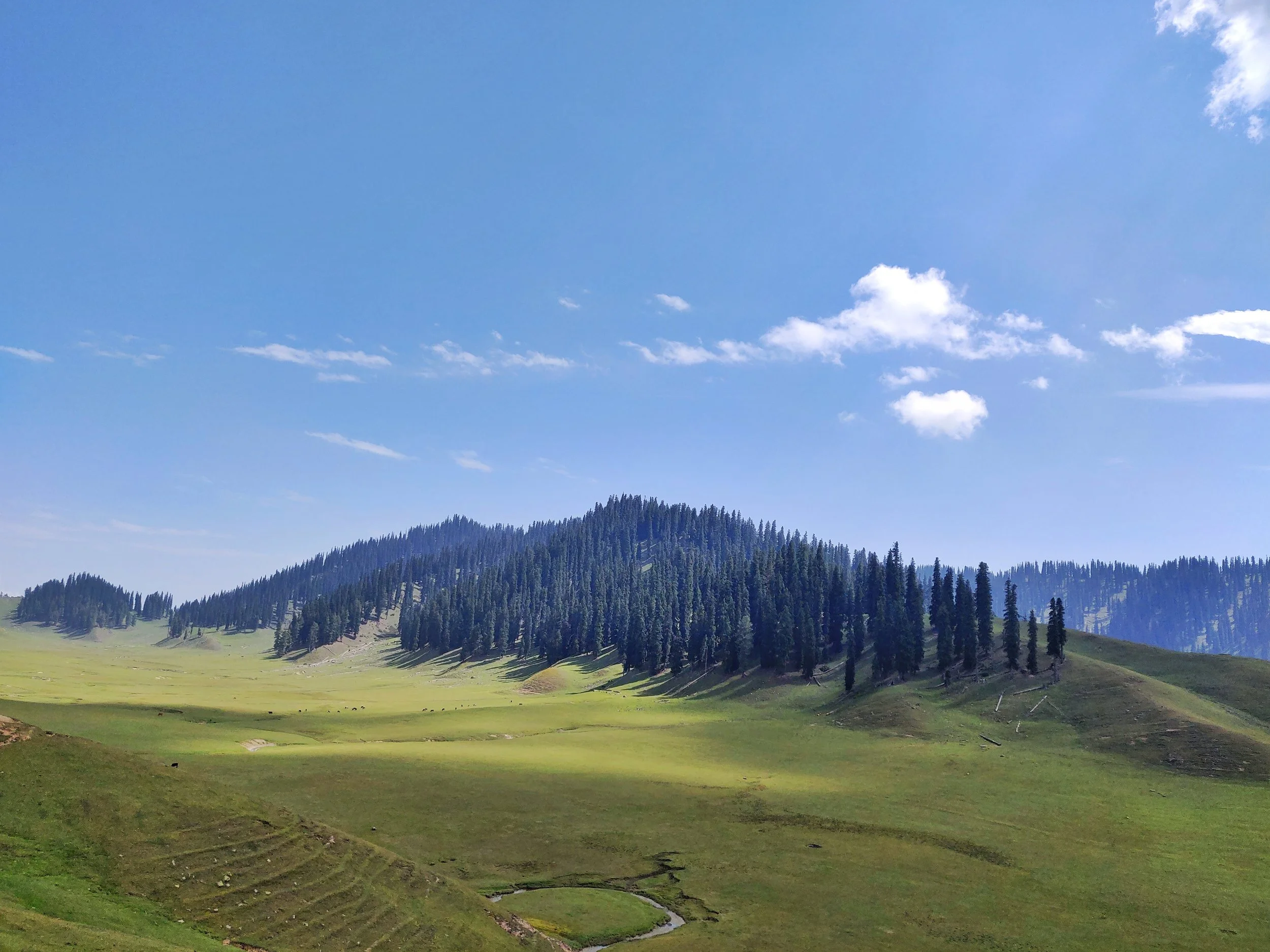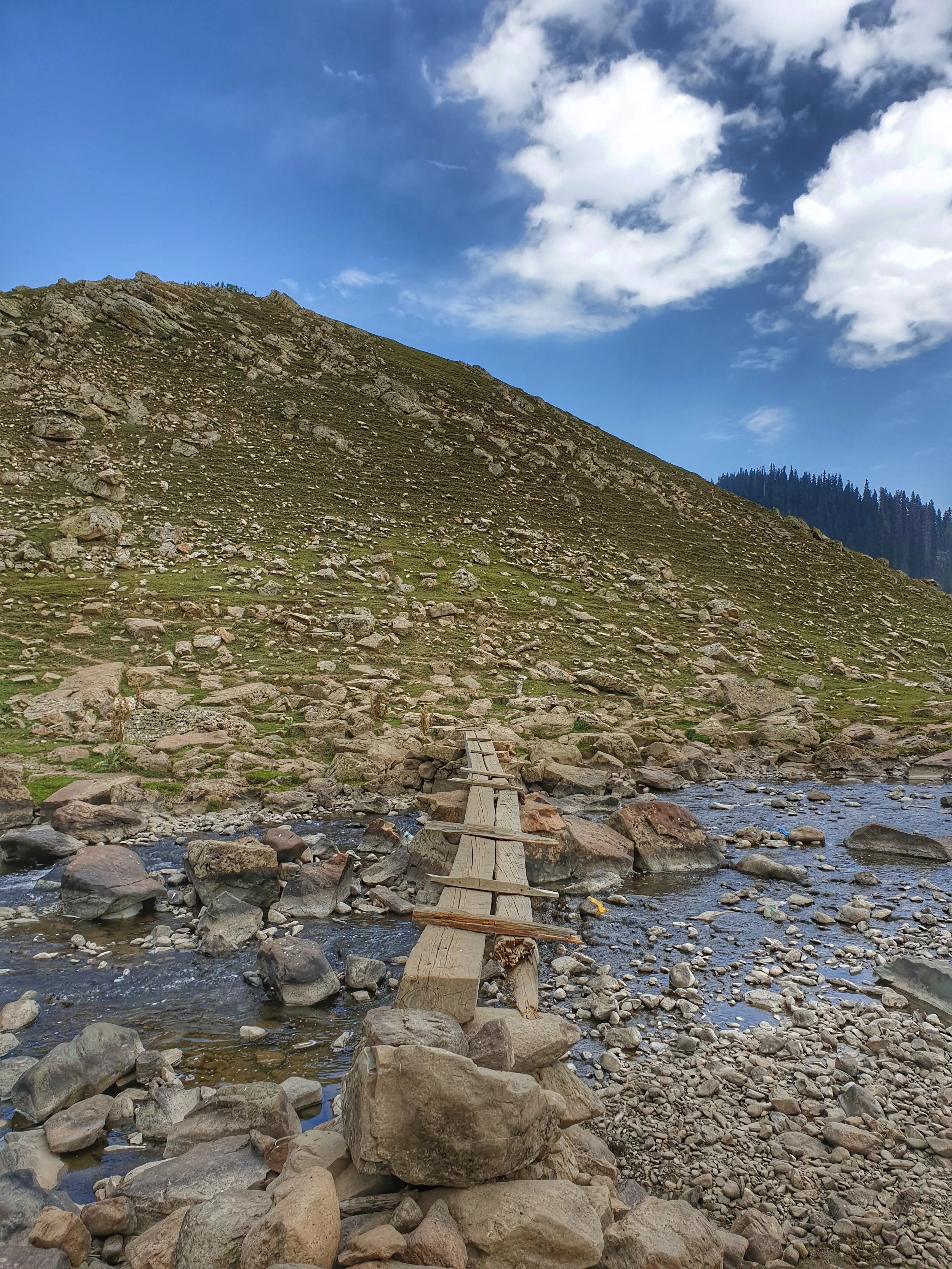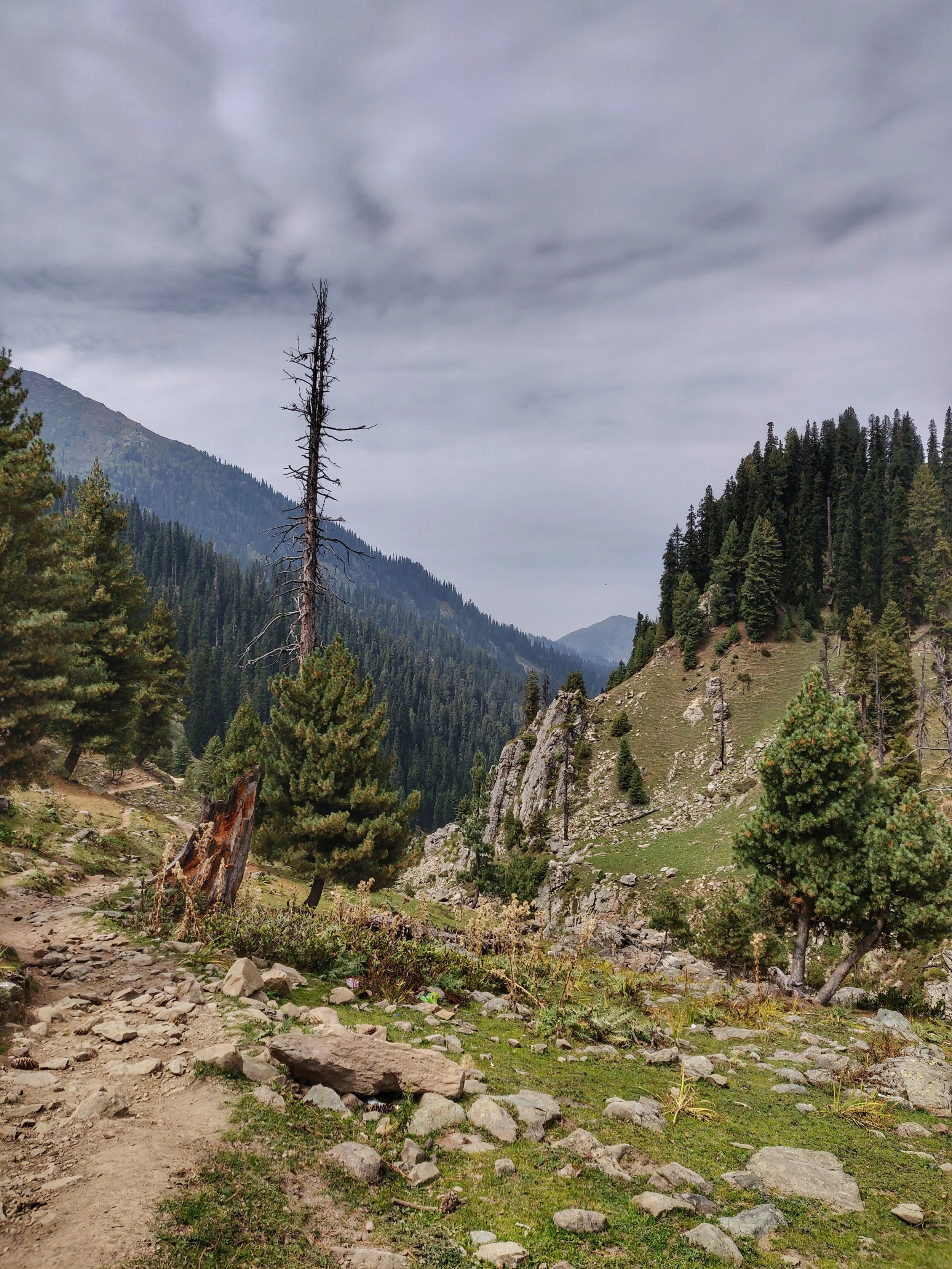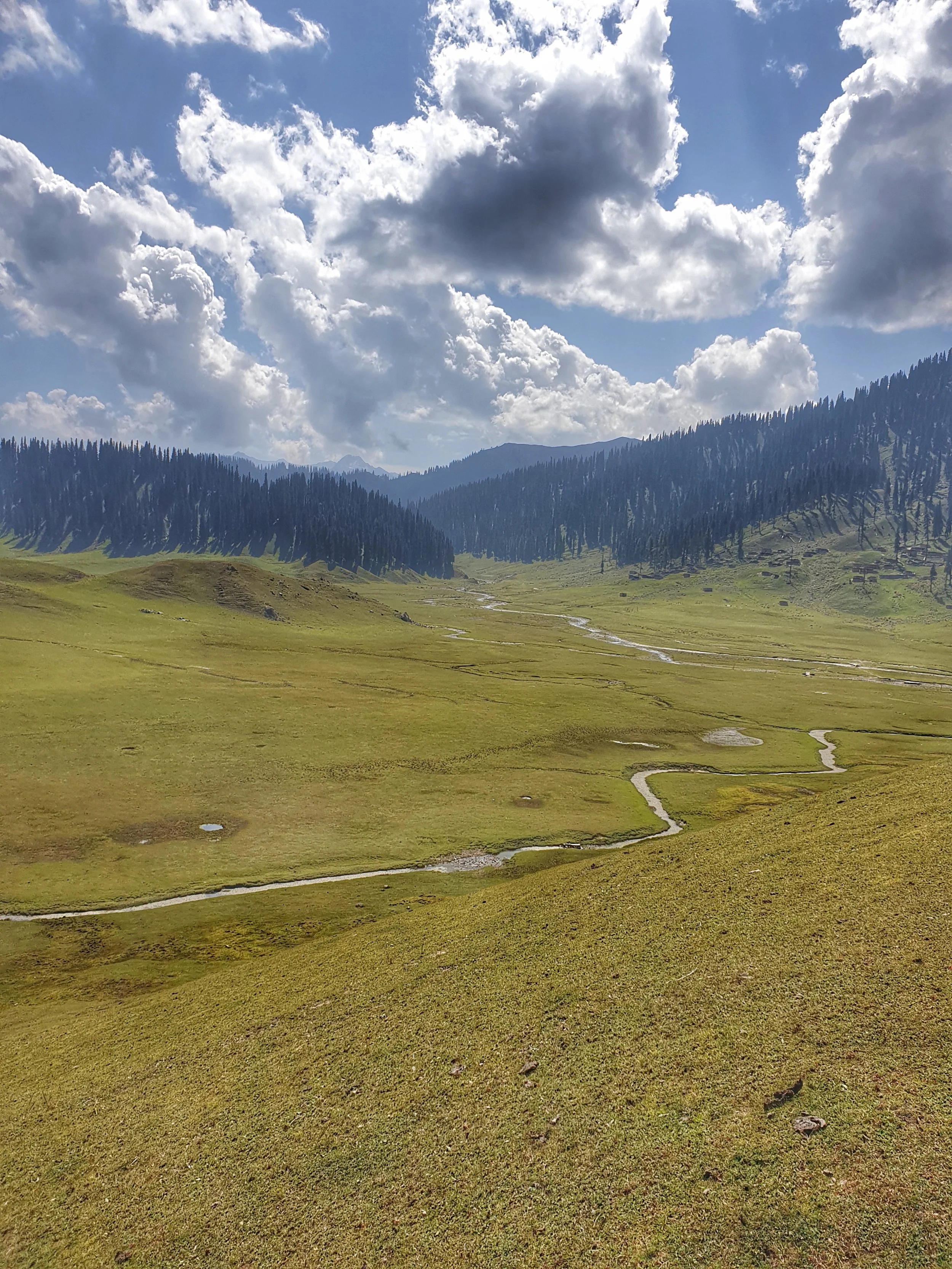Bangus
One of the relatively unknown areas of Kashmir with vast tourism potential is the Valley of Bangus. Lying within the Trans Himalayan Area, Bangus is a unique combination of ecological area, compromising Mountain Biome, which includes Grassland Biome with flora at lower altitudes, and Taiga or Coniferous forest.
The Valley which lies at an altitude of around 10,000 ft above sea level, is in the northern part of district Kupwara within the Handwara sub-district. Occupying an area of 300 sq kms (20 x 15) the principal Valley locally known as Bod Bangus (Big Bangus) consists of a linear elliptical bowl aligned along the East West axis.
The Valley is surrounded by Rajwar and Mawar in the East, Shamsbari and Dajlungun Mountains in the West, Chowkibal and Karnah Gali in the North. A smaller side Valley known as Lokut Bangus (Small Bangus) lies on the north-eastern side of the Main Valley. Both the Valleys comprise level green meadows surrounded by low lying Mountains covered with dense Coniferous forests (Budloo) with a stream flowing through.
These Meadows are divided into two types - Plain Meadows and Plateaus. The Meadows and slopes of the side Plateaus are covered with a Range of Flowers and Medicinal plants. The Meadows support a rich variety of Grassland flora which had Medicinal value as well. A large part of the Plain within the Valley of Bangus is water locked, during the rainy Season. The Valley is traversed by a number of small streams whose number sources stand at 14. These include the Roshan Kul, Tillwan Kul and Douda Kul. The Valley is also fed by the Waters of the Qazinag and Satkulnag springs. The Water of the various streams in the Valley form one of the headwaters of the Kamil River which in turn joins the Lolab stream, thus forming the Pohru River.
Plain Meadows include the open Plains of Chota Bangus, Bod Bangus, Masjid Aagan, Nichan Reyan and Kiyind Patter. Tableland Meadows constitute about 60% of the Meadows. These include Bidran, Lashar, Dodhe, Gumre, Cheekta, Deeyar, Satkoul and Zanzer.





